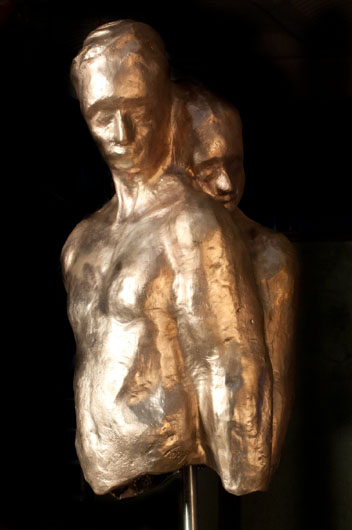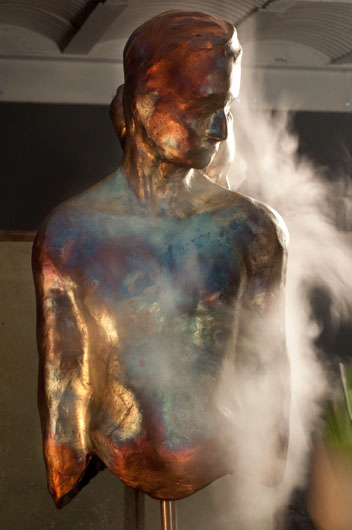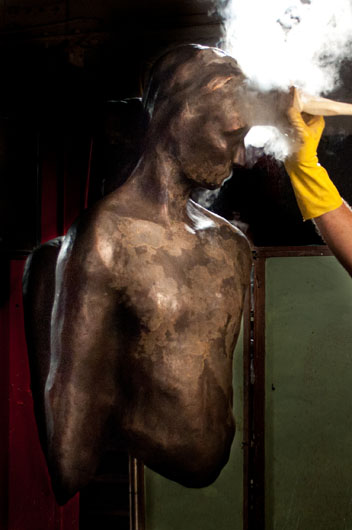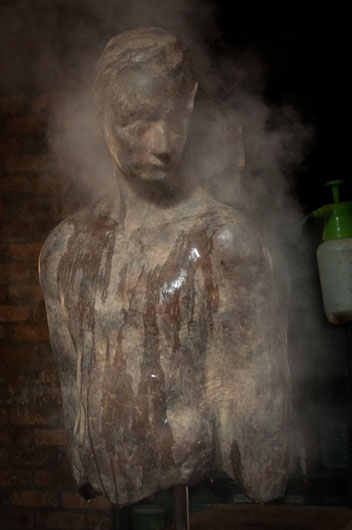
Once the casting is approved by the artist the sculpture is sandblasted. Next the surface texture is prepared by different techniques that can include abrasion, polishing and sanding.
Timing is crucial as the oxidation process starts as soon as the sandblasted sculpture is exposed to the atmosphere.

The hot patinas are so named because the metal surface of the sculpture is heated to open its pores. Hot patinas offer a great amount of control in colour variation.

When the base coat is sprayed onto the hot bronze surface, the colour changes from yellow, to purple, to white and then to gray.

The base coat is fundamental to the patina's modeling and adds a rich luster to the bronze.

Next, the sculpture is reheated and a chemical solution is sparingly dabbed onto its surface with a bristled brush. As the patineur works across the surface the bronze will gradually darken to a rusty-brown color.

The patina develops and changes as the chemicals are layered. Interesting effects are created through dabbing techniques.

The sculpture is washed to neutralize the chemical reaction. As soon as the patineur achieves the desired colour, the metal is allowed to cool.

While the sculpture is still warm to the touch the surface is waxed to preserve the patina. The sculpture is also well buffed to impart a soft, pleasant luster to the finish that accentuates both the bronze and its patina.
‹







 ›
›
